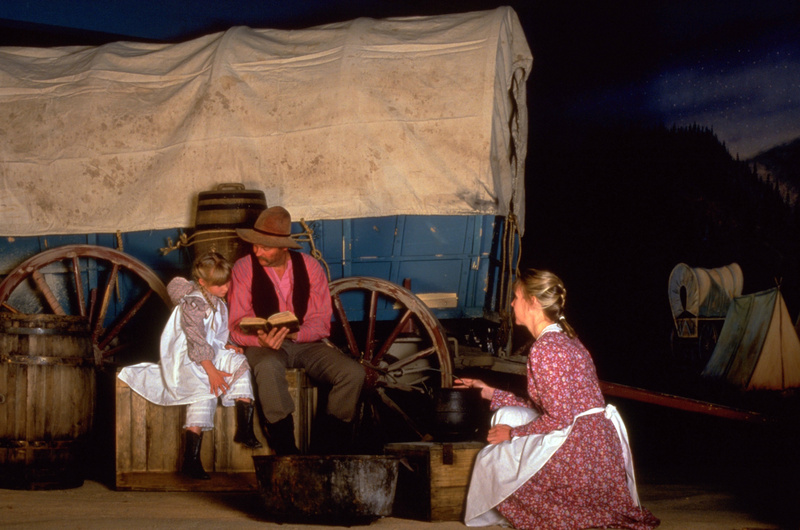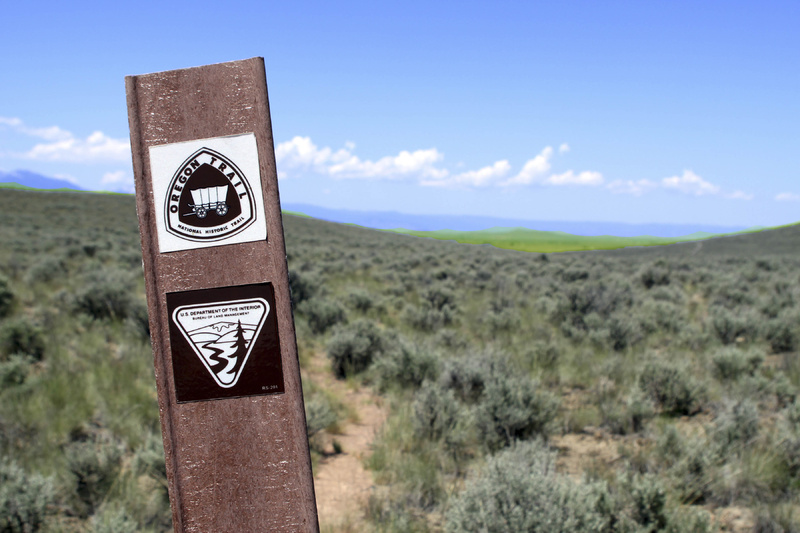BAKER CITY, Ore. – You can tell your kids how easy they have it, and maybe they’ll listen for awhile. But to prove how simple it is to wash dishes or clothes in the 21st century, try showing them how pioneer children did it as they crossed the United States in the westward migration.
Before doing the dishes, they had to find water and heat it up on a fire. Washing clothes often meant handling caustic lye soap. Kids crossing the continent in the mid-19th century often had roles and responsibilities that were critical to the family’s survival, said Larry Jones, a retired Idaho state historian who has written extensively about the Oregon Trail.
“They were pretty tough little kids,” said Jones. “Many walked the entire 2,000 miles barefoot.”
It’s been about 160 years since the westward migration started up in force between Missouri and the Pacific states, but there are still plenty of signs left behind by the more than 400,000 people estimated to have made that journey. The wagon ruts of the trail can be seen all over the West with many of them accessible — particularly in Idaho — by car or on foot and marked with signs.
And for families who want to travel all or part of the trail together, there are also plenty of lessons to be learned from the experiences of those who went before.
The Oregon Trail is one of many paths that cross from east to west, carved by pioneers migrating on foot, in wagons, or on horseback toward the promise of land, gold, or just a better life. Most of the emigration occurred between 1843 and 1869, tapering off quickly when the transcontinental railroad was completed. But emigration on the trails continued into the 20th century.
Following one of those trails, or just a section, makes for a memorable family trip.
Kids love climbing landmarks like Independence Rock — a Wyoming site that many pioneers aimed to reach by July 4.
“It’s just a scramble and then you’re standing up there like children did 150 years ago,” said Julie Fanselow, an Idaho writer whose “Traveling the Oregon Trail” (Falcon Guide) is recommended by National Park Service historians for families who want to follow the trail.
The details of the crossing are dramatic. An estimated one in 10 pioneers perished en route from cholera or dysentery or from accidents like accidental gunshots or falling under a wagon wheel. Their tribulations are explained in great detail at museums like the Oregon Trail Interpretive Center in Baker City, Ore., which uses a full-size diorama, complete with oxen and freshly dug graves, to illustrate the life of the pioneers.
The sites of forts, massacres and of dangerous river crossings, such as Three Island Crossing in Glenns Ferry, Idaho, are marked by signs, parks and sometimes with annual celebrations.
“Kids are fascinated with the whole adventure side of it,” said Sarah LeCompte, the director of the Interpretive Center. “For adults, I think they’re comparing it with their own experience, and ‘Would I have been brave enough to do that?’ We hear a lot of that philosophizing here.”
And then there are the chores. Anne Richey Allen, a Boise Girl Scout leader, has long taught kids about pioneer chores. She recalled seeing her scouts demonstrate pioneer clothes-washing techniques at an Idaho Historical Museum event.
“They had wringers, they had washtubs, and the girls would wash tea towels and aprons and then run them through the wringer,” said Allen. “Everybody and their brother wanted to do it. It cracked me up. If you were at home, would you want to do that? Heck no.
Send questions/comments to the editors.




Success. Please wait for the page to reload. If the page does not reload within 5 seconds, please refresh the page.
Enter your email and password to access comments.
Hi, to comment on stories you must . This profile is in addition to your subscription and website login.
Already have a commenting profile? .
Invalid username/password.
Please check your email to confirm and complete your registration.
Only subscribers are eligible to post comments. Please subscribe or login first for digital access. Here’s why.
Use the form below to reset your password. When you've submitted your account email, we will send an email with a reset code.